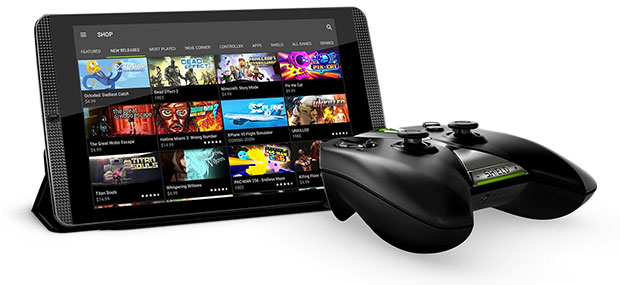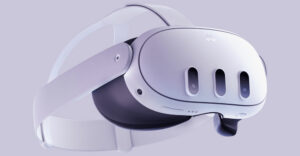Nvidia on Tuesday revealed a refreshed Shield Tablet K1 and indicated that it isn’t done updating the gaming slate.
One of the biggest parts of the refresh is a cut of US$100 off the price of the 16-GB tablet. The original Shield Tablet was available in a $299 16-GB version and a $399 32-GB variant.
There’s also a new battery, replacing the fire-prone cells that caused Nvidia to recall the original Shield Tablets back in July.
What Else Is New
The refreshed Shield Tablet has picked up silicon grips, but it dropped LTE and the 32-GB variant. WiFi and the 16 GB of storage remain.
With its microSD card and micro-USB 2.0 port, Shield Tablet K1 gives owners a pair of options for loading and unloading massive gaming libraries for the tablet.
Elsewhere, the Shield Tablet K1 is the same as its predecessor. It’s powered by an Nvidia Tegra K1 192-core Kepler GPU, hence the “K1” in its name, and a 2.2-GHz quad-core Cortex A-15 CPU.
It has a pair of matching 5-megapixel HDR cameras, one on its face and the other on its back. Its face measures 8 inches and puts out a pixel count of 1920 x 1200.
The Shield Tablet runs Android 5.0 Lollipop, though Nvidia intends to update it with Marshmallow soon.
It supports 4K video output to TVs and Nvidia’s GeForce Now cloud gaming service.
The Shield Tablet’s target demographic is “tech enthusiast gamers,” said Jordan Dodge, spokesperson for Nvidia’s Shield unit.
“The Shield Tablet K1 is a high-performance tablet that has great gaming capabilities,” he told TechNewsWorld. It “has market-leading performance at a great new price in time for the holidays.”
Accessories for the Shield Tablet K1 include a cover, a Shield Controller, the Shield world charger and the Shield DirectStylus 2 for the graphic artists out there.
Nvidia also offers a set-top box, theShield TV, but the Shield Tablet K1 has a slightly different mission.
Tablet Targeting
The Shield Tablet has a growing collection of native games, formatted especially for its K1 chip, and the ability to relay games from PC to TV. It supports Nvidia’s cloud-streaming service for games and plays Android games.
The Shield Tablet K1 is more than all that, however, according to Harry Wang, director of health and mobile product research atParks Associates.
“Nvidia’s Shield Tablet reflects not only the chipset-maker’s efforts to showcase its graphic processor expertise, but also its desire to carve out a niche inside the competitive tablet market,” he told TechNewsWorld.
The market for tablets has slowed considerably since the start of 2014, said Wang.
Part of that may be due to the rise of phablets — big-faced smartphones — and the rest may be a symptom of maturation. The Shield Tablet’s big price plunge isn’t an isolated case, as similar cuts already have been capturing the holdouts.
Tablet ownership among U.S. households with broadband has increased 6 percentage points, from about 60 percent in the first quarter of 2014 to around 66 percent in the third quarter of this year, Wang said.
“The slowdown in demand and the faster-than-expected maturing of the tablet market has prompted tablet brands and their suppliers to differentiate via more fine-tuned targeting,” he said. “Like in the PC era when we witnessed the emergence of desktop/laptop computers designed for gamers, the tablet market is going through a similar cycle.”




















































